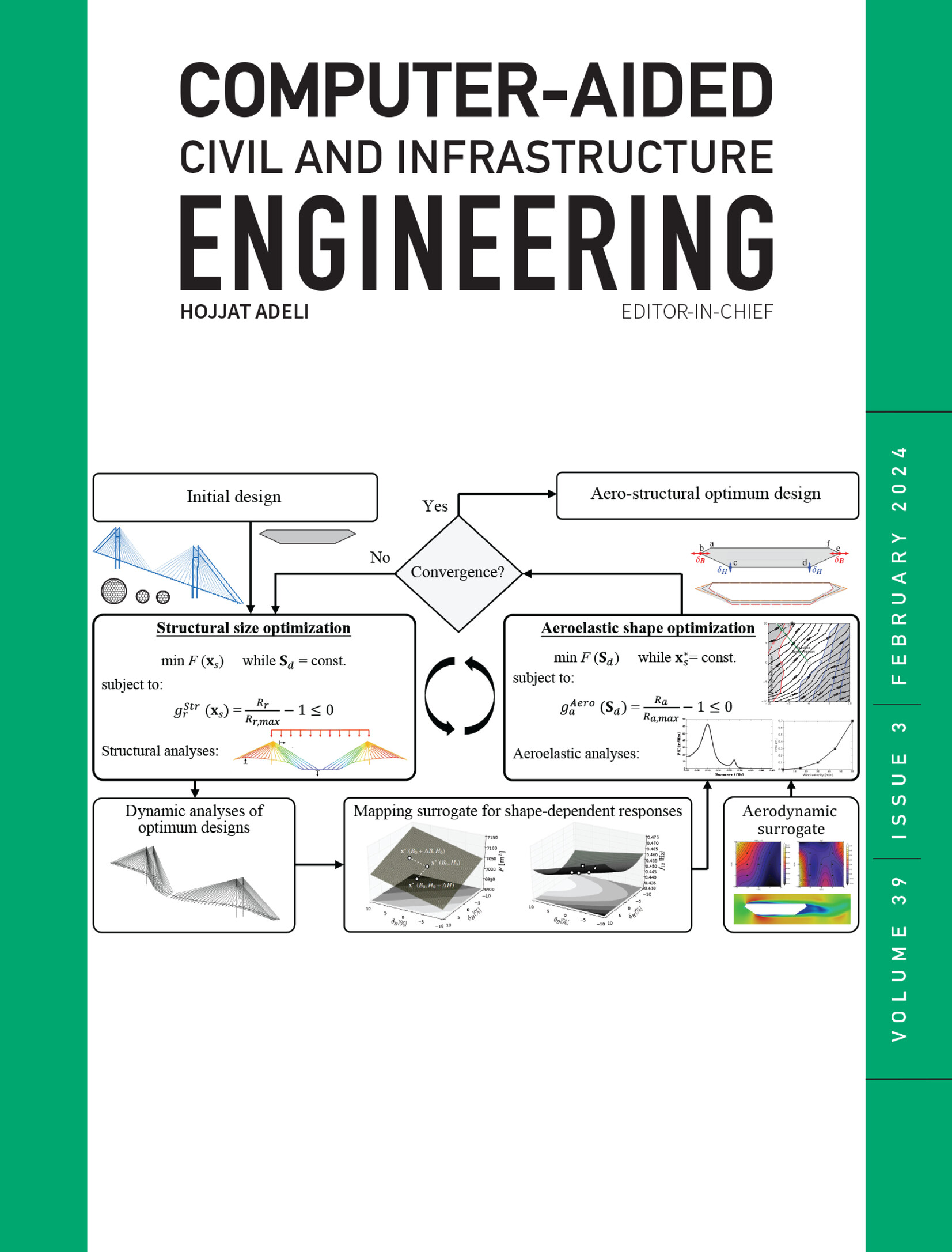基于动态蛇形卷积的地铁隧道衬砌裂缝自动检测系统
IF 9.1
1区 工程技术
Q1 COMPUTER SCIENCE, INTERDISCIPLINARY APPLICATIONS
引用次数: 0
摘要
隧道衬砌缺陷检测是隧道维修工作的重要组成部分。传统的隧道检测方法普遍效率低下,难以在有限的维修时间内完成密集的检测任务并提供详细的裂缝特征数据。本研究提出了一种基于深度学习的地铁隧道衬砌结构健康状况自动检测方法,并提供衬砌裂缝的定量数据。提出的框架包括(1)解决检测速度和成像精度之间的平衡,开发一种前端检测工具-地铁隧道缺陷检测系统,该系统可以高效快速地捕获衬砌表面的高分辨率图像,同时建立基于CNN的分类器,用于快速分类裂缝图像。(2)考虑到裂纹的细长形态特征,建立了DSC_CrackU模型进行裂纹分割。该模型引入动态蛇形卷积(DSConv),通过自适应调整卷积核的形状,实现对裂纹的精细分割。同时,通过特征融合模块集成了多维特征信息,并利用自高效通道模块增强了对裂纹区域的灵敏度。结果表明,该算法在使用较少的计算参数的同时,在其他指标上保持了优异的性能。(3)提出了一种基于DSC_CrackU识别结果的定量表征算法,该算法将裂缝的像素维度特征映射到物理维度,从而在理论框架和工程标准之间建立联系。跨多个隧道的现场应用测试验证了拟议框架在工程应用方面的技术可行性。本文章由计算机程序翻译,如有差异,请以英文原文为准。
Automated detection system of metro tunnel lining crack using dynamic snake convolution
Inspecting defects in tunnel linings is a crucial part of tunnel maintenance work. Traditional tunnel inspection methods are generally inefficient, making it difficult to complete intensive inspection tasks and provide detailed characteristic data of cracks within the limited maintenance time. In this research, a deep learning–driven automatic inspection method was developed to evaluate the structural health of metro tunnel linings and deliver quantitative data on lining cracks. The proposed framework encompasses (1) addressing the balance between detection speed and imaging accuracy, developing a front‐end inspection vehicle—the metro tunnel defect detection system—which efficiently and rapidly captures high‐resolution images of the lining surface, alongside establishing a CNN‐based classifier for fast classification of crack images. (2) Considering the slender morphological characteristics of cracks, the DSC_CrackU model was developed for crack segmentation. This model introduces dynamic snake convolution (DSConv) and achieves fine segmentation of cracks by adaptively adjusting the shape of convolution kernels. Meanwhile, it integrates multidimensional feature information by means of the feature fusion module and utilizes the self‐efficient channel module to enhance sensitivity to crack regions. Results show that the algorithm uses fewer computational parameters while maintaining excellent performance in other metrics. (3) We propose a quantitative characterization algorithm based on DSC_CrackU recognition outcomes, which maps pixel‐dimensional features of cracks to the physical dimension, thereby forging a connection between the theoretical framework and engineering standards. Field application tests across multiple tunnels validated the technical feasibility of the proposed framework for engineering applications.
求助全文
通过发布文献求助,成功后即可免费获取论文全文。
去求助
来源期刊
CiteScore
17.60
自引率
19.80%
发文量
146
审稿时长
1 months
期刊介绍:
Computer-Aided Civil and Infrastructure Engineering stands as a scholarly, peer-reviewed archival journal, serving as a vital link between advancements in computer technology and civil and infrastructure engineering. The journal serves as a distinctive platform for the publication of original articles, spotlighting novel computational techniques and inventive applications of computers. Specifically, it concentrates on recent progress in computer and information technologies, fostering the development and application of emerging computing paradigms.
Encompassing a broad scope, the journal addresses bridge, construction, environmental, highway, geotechnical, structural, transportation, and water resources engineering. It extends its reach to the management of infrastructure systems, covering domains such as highways, bridges, pavements, airports, and utilities. The journal delves into areas like artificial intelligence, cognitive modeling, concurrent engineering, database management, distributed computing, evolutionary computing, fuzzy logic, genetic algorithms, geometric modeling, internet-based technologies, knowledge discovery and engineering, machine learning, mobile computing, multimedia technologies, networking, neural network computing, optimization and search, parallel processing, robotics, smart structures, software engineering, virtual reality, and visualization techniques.

 求助内容:
求助内容: 应助结果提醒方式:
应助结果提醒方式:


